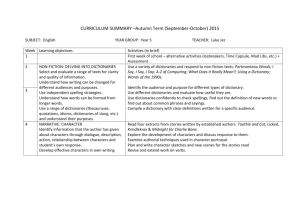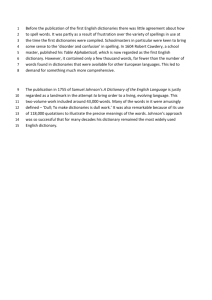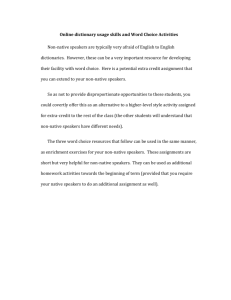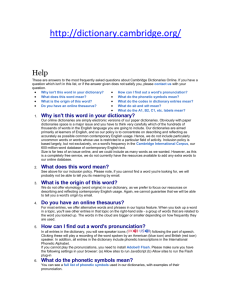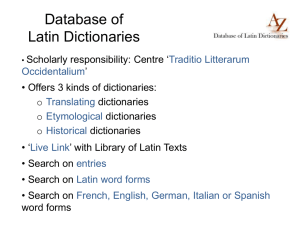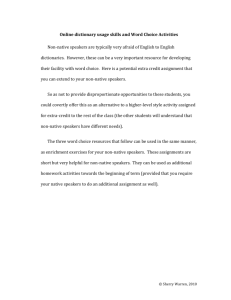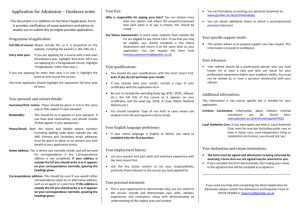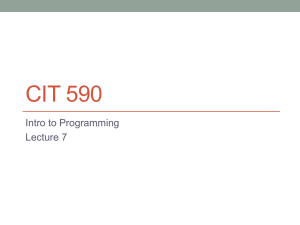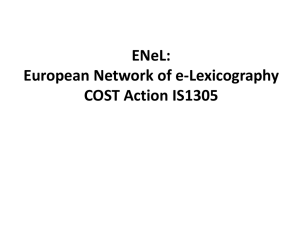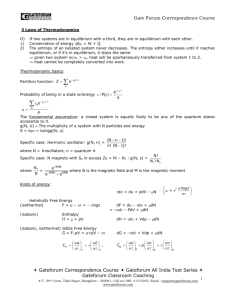Historical Sociological Research
advertisement
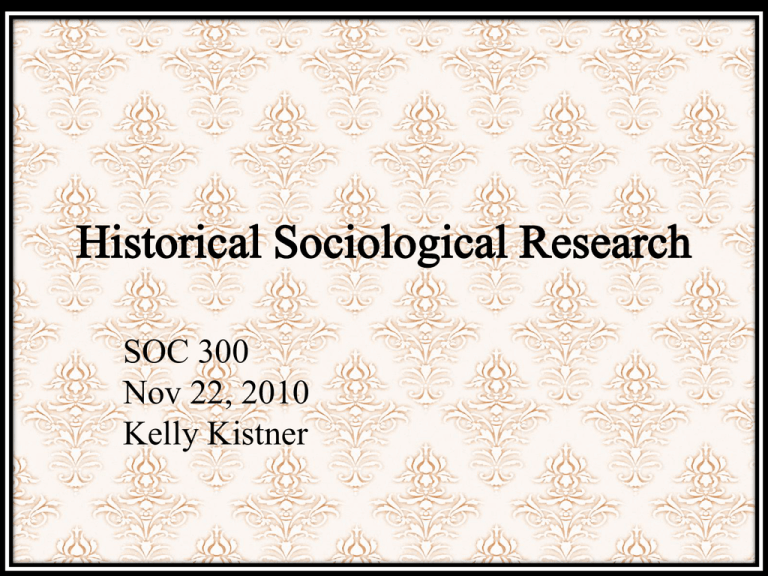
Historical Sociological Research SOC 300 Nov 22, 2010 Kelly Kistner Overview • • • • • • • • What is historical sociological research? Why do it? Data Examples Tools Disadvantages Advantages My own research What is it? “differs substantially … though it overlaps” (Babbie 2010:350) • Overlaps with field research, content analysis, existing statistics • Exists in multiple social scientific disciplines • Often uses a single or small number of case studies • Affinity for “big questions,” attention to macro phenomena What is it? • Often comparative (across cases or across time). Seek “natural experiments” • Can include relatively contemporary topics • Can be inductive or deductive • Subject to similar considerations of methodological logic – Is the data representative of the population in question? – Is the data appropriate to the research question? Why do historical research? • Historical perspective. Hindsight. • Document changes over time • Consider contextual factors bearing on other correlations • Study larger units of analysis. “Institutions” (nation states, power or governance structure, classes, culture, religion, economic structure) Why do historical research? • Perceive and follow action, processes, and causality • To consider varied temporal structures of causality – – – – – Tornado (quick cause – quick effect)* Meteorite (quick cause – long, slow effect)* Earthquake (long , slow cause – quick effect)* Global warming (long , slow cause – long, slow effect)* Multi-causal conjuncture, causal chains, path-dependencies, thresholds, tipping points, critical junctures, creative destruction, dialectics, institutional lag * Adapted from Pierson (2003) Data • Secondary Sources (existing publications) • Existing Statistics • Primary Sources – Correspondence, diaries, oral histories, charters, contracts, meeting minutes, birth and death certificates, attendance rosters, registries, manuscripts, newspapers, magazines, tax records, property deeds, memoirs, etc. – Held in archives and museums (national, special collections, private), sometimes in print, increasingly online Examples • Marx – Why did capitalism develop? – Capital, property protection, and material means of production accumulated in emergent bourgeoisie • Weber – Why did capitalism first develop in Western Europe? – Impact of Protestant religious ideas in contrast to Catholicism, Confucianism, and Buddhism • Skocpol on causes of social revolutions – Similarities across France, Russia, China • Mahoney – Why did Latin American nations with similar backgrounds and resources end up with different modern state structures? Tools • Interpretive understanding. “Verstehen” • Comparison. Similarities, differences. • Ideal Types and Typologies Disadvantages • Researcher bias, subjective interpretations • Hard to evaluate researcher’s rigor where nonsystematic methods are used • Hard to untangle direct causation • Data can be spotty, asymmetrical between cases, non-representative • Risk of reducing to non-generalizable “just so” stories Disadvantages • Practical considerations – Availability of original sources – Access to sources – Condition of sources (decayed, fragile, hard to read) – Language – Can be tedious Advantages • • • • • • • • Can get rich, detailed narratives Can reconstruct action and processes Basis for generating new data sets Researcher can focus on most relevant events Adaptable Unobtrusive Cheap More intimate materials might be available (diaries, personal correspondence) • Generally requires no IRB approval My Research • Analysis of the making of three dictionaries in mid-late nineteenth century Germany, France, and Britain 1838-1961 1841-1873 1857-1928 Significance of the Dictionaries • Emerged around the same time, citing same inspiration, goals, and theoretical and methodological guidance from comparative philology/linguistic science • Early examples of large-scale scientific research and information projects. At a time when the status and practice of science greatly differed across Germany, France, and Britain Significance of the Dictionaries • Greatly distinguished in style and scale from earlier forms of dictionary-making • Each of the three would differ in how they were produced and how they presented information – German dictionary (professionals, most analytic) – French (individual, most prescriptive) – English (open community, most descriptive) Significance of the Dictionaries • Peculiar production model of the OED – Massive global volunteer operation – High internal heterogeneity – Conflict and misunderstanding with external sponsors – Defies typical “market or hierarchy” organizational models – Many similarities to “open source” software production and other internet-facilitated modes of production Research Questions, Motivations • Why were these dictionaries produced differently? – Is there a relationship between social structural differences and the viable means of organization? • What is the relationship between their production method and presentation style? – Why and how would certain organizational structures facilitate or hinder the production of certain types of information? • How was the organizational model of the OED sustainable? – What can we abstract from its model to understand the proliferation of similar modes of production in the internet age? Methods • Secondary Sources, Ideal Types and typologies (comparison, correspondence, correlation) • Primary source narratives (micro-level action, conflict, decision-making) Autonomy Scientific Knowledge Production in mid 19th Century High Low Professionalization High Low Britain Germany (Marginalized/ (Internalized) Disorganized) France (Externalized) Summary of Multi-Level Case Characteristics Germany France Britain Overall character of scientific knowledge Marginalized/ production Internalized Externalized Disorganized Individual State Basis for authority Expertise Support Empirical Production of dictionary Professional Individual Community Presentation style Analytic Prescriptive Descriptive Primary Source Data • Personal correspondence; meeting minutes, presentations, and reports of the philological society; original publications by the relevant actors; dictionary word-slips; planning materials; manuscript drafts; commentary on manuscript drafts; contracts; newspaper reports and interviews; reviews; memoranda and formal correspondence; appeals for volunteers; instructions to contributors; record keeping books; budgets; photographs; eulogies; etc. • Where: Oxford University Press, Bodleian Library, Berlin Staatsbibliothek, Printed “Briefwechsel,” Online, Correspondence with archivists.

